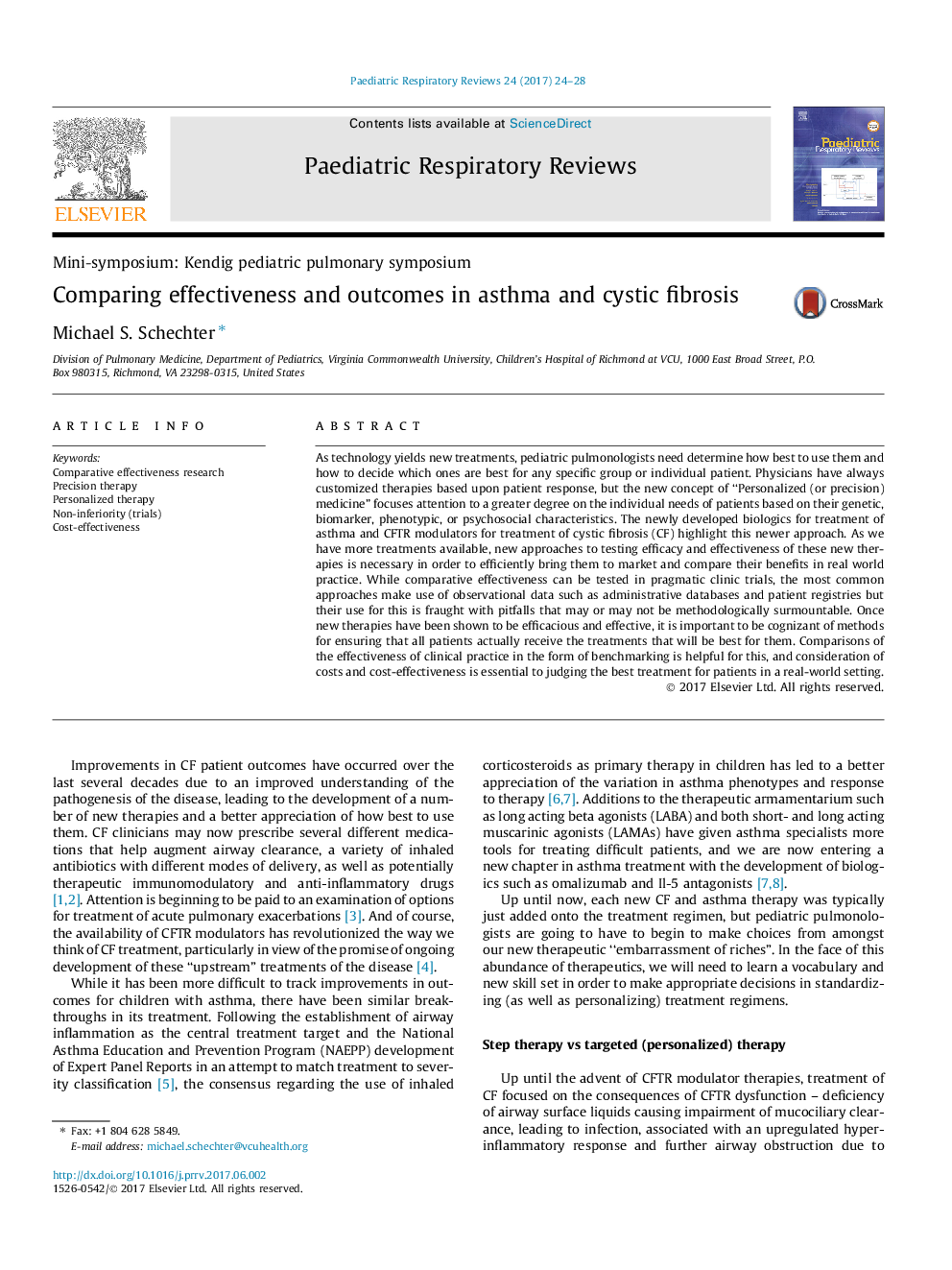| Article ID | Journal | Published Year | Pages | File Type |
|---|---|---|---|---|
| 5719894 | Paediatric Respiratory Reviews | 2017 | 5 Pages |
As technology yields new treatments, pediatric pulmonologists need determine how best to use them and how to decide which ones are best for any specific group or individual patient. Physicians have always customized therapies based upon patient response, but the new concept of “Personalized (or precision) medicine” focuses attention to a greater degree on the individual needs of patients based on their genetic, biomarker, phenotypic, or psychosocial characteristics. The newly developed biologics for treatment of asthma and CFTR modulators for treatment of cystic fibrosis (CF) highlight this newer approach. As we have more treatments available, new approaches to testing efficacy and effectiveness of these new therapies is necessary in order to efficiently bring them to market and compare their benefits in real world practice. While comparative effectiveness can be tested in pragmatic clinic trials, the most common approaches make use of observational data such as administrative databases and patient registries but their use for this is fraught with pitfalls that may or may not be methodologically surmountable. Once new therapies have been shown to be efficacious and effective, it is important to be cognizant of methods for ensuring that all patients actually receive the treatments that will be best for them. Comparisons of the effectiveness of clinical practice in the form of benchmarking is helpful for this, and consideration of costs and cost-effectiveness is essential to judging the best treatment for patients in a real-world setting.
